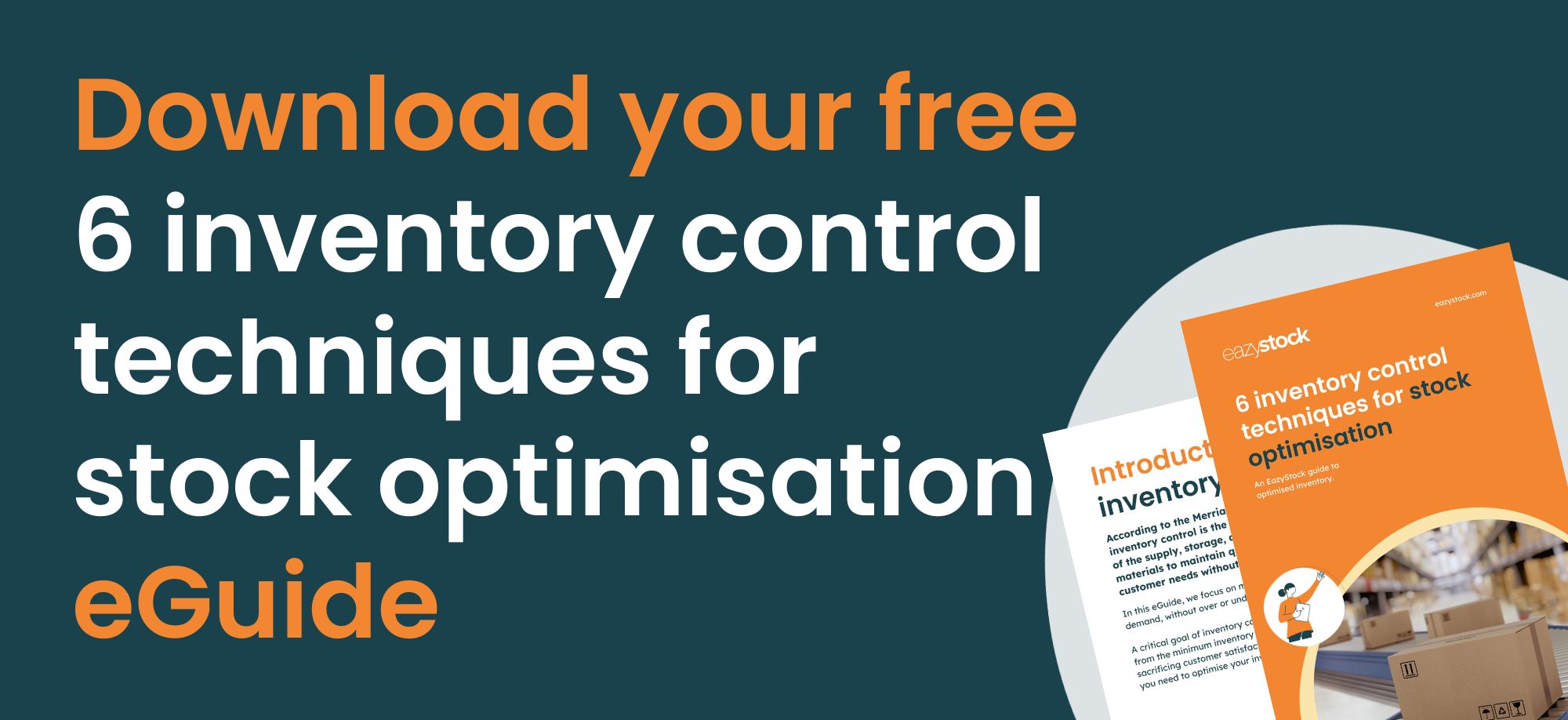Just-in-time vs Just-in-case stock control – a guide
JIT v JIC stock management
For years companies have operated a just-in-time (JIT) supply chain model, only ordering stock items when necessary and carrying minimal inventory to reduce carrying costs.
The pandemic and Brexit have led to various global supply chain issues, such as increased demand volatility and troubles with stock availability. This has seen a switch to just-in-case (JIC) inventory management as companies raise their stock levels to avoid the risk of running out.
Here we explain the benefits and drawbacks of both JIT and JIC inventory management models and help you decide which is right for your business.
What is just-in-time stock control?

With JIT stock management, companies order products and stock to meet customer demand. They make sure stock levels mirror actual consumption levels to minimise waste. By only ordering necessary stock, they can maintain low storage costs and invest capital into other business areas. This works where there aren’t any issues in the supply chain and requires accurate demand forecasting.
Advantages of just in time stock control
The advantages of JIT inventory management strategies include:
- Preventing over-ordering and having unnecessary stock so you can divert cash to other parts of the business.
- Reducing waste as only stock that is needed is ordered.
- Reducing warehousing and carrying costs.
Disadvantages of just in time stock control
The disadvantages of using just-in-time methods include:
- You may struggle to meet any unexpected surges in demand. It works best when demand is stable with little to no fluctuations.
- JIT needs supplier reliability, which is much easier for organisations that own parts of the supply chain. Alternatively, you need to have strong relationships with your suppliers, so they’ll be more inclined to help you if there’s a problem.
- If you fail to fulfil demand, you may see an increased risk of dissatisfied customers moving to competitors with better product availability.

What is just-in-case stock control?
JIC stock management takes a more cautious approach. Companies keep ‘buffer’ or ‘safety stock’ of items so that they can quickly respond to unexpected demand surges. Companies will look at anticipated demand and add on extra quantities ‘just-in-case’. JIC works well where demand is volatile or to help overcome supply chain disruption.
Advantages of just-in-case stock control
The advantages of following a just-in-case inventory management strategy include:
- The ability to use the additional stock to meet any unexpected demand surges or mitigate supply chain disruption, such as increased delivery times or suppliers with stock outs.
- Having the right stock available could be more profitable in the long run. It can help you generate more sales and gain a competitive advantage if your competitors hit a stock out. These additional sales could balance the increase in carrying costs and capital invested in buffer stock.
- Being able to respond to market changes quickly due to additional safety stock puts you in a strong position to facilitate growth.

Disadvantages of just in case stock control
The disadvantages to just-in-case stock management include:
- Carrying safety stock or increasing your safety stock levels will impact your carrying costs. For example, more stock takes up warehouse space, increases storage costs and ties up capital that you could use elsewhere.
- Stock with low turnover could date and become obsolete. This can mean either destroying it or selling it at a heavy discount.
Which inventory management strategy is best for you – JIC versus JIT
When faced with inventory challenges caused by supply chain volatility, it can be tempting to simply increase stock levels and boost safety stock to ensure you can meet your demand. However, making a drastic move from JIT to JIC inventory management may over-simplify the solution.
In reality, neither the JIT nor JIC model is perfect. Rather than pitch just-in-time inventory management against just-in-case, you should bring together the advantages of each. For example, engage the safety stock of just-in-case inventory with just-in-time’s capital management.
To do this, you need a good grasp of demand forecasting techniques to understand your upcoming stock requirements. You can then optimise stock levels to be cost-effectively low and use safety stock to meet unexpected demand. Take a look at our second post on Implementing just-in-case inventory management for more information.
Obviously, the mix of these strategies will depend on your industry, e.g., how volatile your market is and how much disruption your supply chains are experiencing. Combining just-in-time and just-in-case stock control can increase inventory management efficiencies whilst bringing agility to deal with disruption.
Whichever approach you take, you may want to consider using inventory optimisation software to help. For more information about how EazyStock can support your JIT or JIC strategies, why not arrange a quick call with one of our team.










